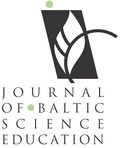THE USE OF INFORMATION AND COMMUNICATION TECHNOLOGIES IN SCIENCE EDUCATION
| Title | THE USE OF INFORMATION AND COMMUNICATION TECHNOLOGIES IN SCIENCE EDUCATION |
| Publication Type | Journal Article |
| Year of Publication | 2011 |
| Authors | Cavas, B |
| Journal | Journal of Baltic Science Education |
| Volume | 10 |
| Issue | 2 |
| Start Page | 72-72 |
| Date Published | June/2011 |
| Type of Article | Editorial |
| ISSN | 1648-3898 |
| Other Numbers | ICID: 953991 |
| Keywords | ICT, learning environments, new technologies, science education |
| Abstract | The use of information and communication technologies (ICT) in science education has become widespread and been developed increasingly by many science educators in our digital time. Students’ and teachers’ use of new technologies both in the classrooms and out of school have enhanced science learning more meaningful and permanent. In recent years, new technologies such as scientific visualizations, statistical modeling, real time data collection, dynamic modeling software, and collaborative group work environments has been used widely in science education. However, many researches have showed that the success and effect of these technologies use in the classroom highly depend on teachers’ knowledge, skills and experiences in this area. It is apparent that, in the innovative classroom environments that are designed with ICT tools, the expenditures will be in vain if science teachers have no enough knowledge, skills and experiences in these technologies. |
| URL | http://oaji.net/articles/2014/987-1410008377.pdf |
| Refereed Designation | Refereed |
| Full Text |
